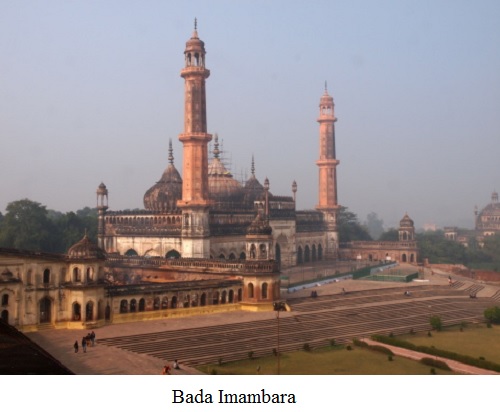Apr 19, 2024
Apr 19, 2024
Who hasn’t heard of Lucknow? The city of Nawabs, the center of the Sepoy Rebellion, the provincial capital between Delhi and Calcutta, the heart of Hindi-speaking india. A city famed for its exquisite etiquette, its poets and its artists.
But is Lucknow still the same, or has it changed? Can one still buy mouth-watering kebabs, and stroll down romantic by-lanes? Or modernity and globalization changed it irrevocably to just another city?
The crux of the answer to these questions depends, at least in part, on how the city is experienced, and with whom. Yes, there is modernity and development, but the old world charm of the city really comes out the slower the travel is. And this is why unpeeling the layers of the city on foot is such a wonderful alternative to anything else. That is, if there is plenty of time at hand.

Take two of Lucknow’s most famous attractions – the big (bara) imambara and its neighbor, the small (chotta) imambara. Imambaras were originally constructed by the Nawabs and had formal gardens and pools in front of the building. The inside of an Imambara offers welcome respite from scorching heat, as the stone paved plazas in front of the Imambara tend to radiate a lot of heat during summer. But it is the settlements behind and around the imambaras that offer the maximum surprise for the curious visitor.
Or take Hazratganj, the main shopping street and business district. Here the outlets on both sides of the road offer a wide variety of clothing, luxury goods, electronics and more. There used to be a time when “ganjing” as it was affectionately called, was akin to a social outing. Today motorized vehicles have taken the place of the horse-drawn carriage of yore, but the ganj is and continues to be a go-to destination in Lucknow.
If Hazratganj is a place where the cultures of Lucknow mix in the present, there are also adequate testimonials to its troubled past. The ruins of the British Residency are one such collection. Here, a contingent of East India Company’s troops were besieged in the aftermath of the events of 1857. The ruined buildings that stand today are a fine reminder of the transition from the Company to the British crown, as also a gentle reminder of the horrors of war.
But these are relics of the past. It becomes more interesting to see whether Lucknow has a distinct culture in the present, and how best to observe this culture. The answer to the first part of this question is a resounding ‘yes’. There is culture, and it does have a significant intensity. Proving this is another story. And this is where globalization comes in.
For it seems that the thing that made Lucknow famous – cuisines, architecture, poetry, art and more – are giving way to a culture that is now obsessed with money, and the making of it. From street corners to the socially well off, few conversations are complete without the mention of money. If there are any takers for the genteel culture where the making of things was more important that what is gotten after they are made – well, these takers are in hiding.
This is the effect of, and the tragedy of – globalization on this city called Lucknow. As new airports, shopping malls, corporate high-security offices and large cars increasingly make their presence felt in this city, what Lucknow loses is its roots – the very thing that gave it an identity in the first place.
Amazingly, some pockets of resistance seem to hold out. The old streets of Aminabad still have the most mouth-watering kebabs at a fraction of the price it might take for a more upmarket location. The by-lanes behind Hazratganj still have a variety of old world professions – tailoring, selling antiques and so on.
As for the rest, Lucknow and globalization have not mixed together very well. The irony is that visitors from outside come to discover ‘genuine’ Lucknow culture, and find instead a city that has lost – or is in the process of losing – much that made it what it is, without an adequate and ready replacement at hand.
So what does the future hold? Which direction will Lucknow take? Clearly, globalization is not the answer to all questions. More developed cities in India and Asia struggle to balance growth with the growing realization that what is being lost in the process is infinitely more precious.
But there is still a lot of Lucknow to enjoy. The riverside (yes, a river runs through it!), moonlit walks in secluded neighborhoods, the never-ending cacophony of human life, trains and vehicles, the cultural event. For lovers of nature there are parks and zoos, for the man in a hurry there are the massive elephant statues in central Lucknow to contemplate the mysteries of life. There are kebabs and curries, and nawabs and worries. But none of this is the essence of Lucknow – that ancient city where sounds sights, and history gather in harmonic panoply.
Image (c) gettyimages.com
16-Nov-2014
More by : Ashish Nangia